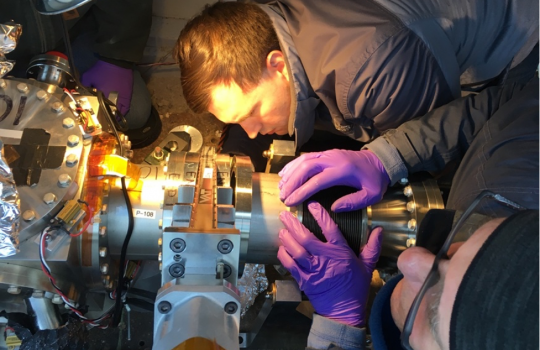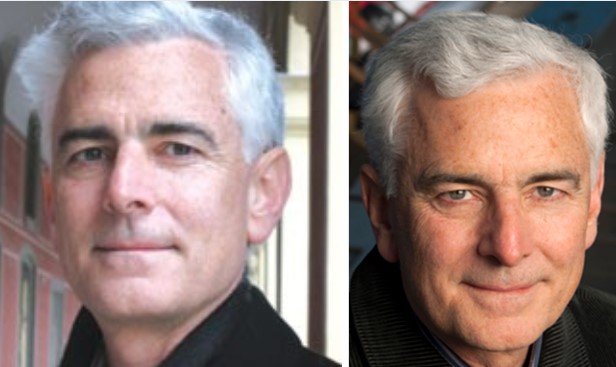Craig Hogan is a renowned American physicist, cosmologist, and research leader best known for his groundbreaking work on gravitational waves and the fundamental structure of space-time. His pioneering theories and experiments have pushed the boundaries of modern physics, blending mathematics, quantum theory, and cosmology into a unified quest to understand the universe at its deepest levels.
Quick Bio
| Full Name | Craig James Hogan |
|---|---|
| Date of Birth | 1951 |
| Age | 74 years (as of 2025) |
| Birthplace | Washington, D.C., United States |
| Nationality | American |
| Profession | Physicist, Cosmologist, Researcher |
| Known For | Holographic Noise Theory, Gravitational Wave Research |
| Education | Ph.D. in Physics, University of Cambridge |
| Institutional Affiliation | University of Chicago, Fermilab |
| Field of Study | Astrophysics, Quantum Mechanics, Cosmology |
| Net Worth | Estimated $5 million (academic and research career) |
| Years Active | 1978–Present |
Introduction
Craig Hogan is one of the leading figures in contemporary physics, best known for exploring how the universe operates at both cosmic and quantum scales. As a professor at the University of Chicago and Director of the Center for Particle Astrophysics at Fermilab, he has dedicated his career to unlocking the secrets of the cosmos. His research into the nature of reality, holographic principles, and gravitational waves has reshaped modern scientific thought, inspiring both scientists and students around the world.
Early Life and Background
Born in 1951 in Washington, D.C., Craig Hogan showed an early fascination with the mysteries of the cosmos. Encouraged by a family that valued education and curiosity, he pursued mathematics and physics from a young age. His passion for understanding the universe grew stronger during high school and later as an undergraduate, where he was drawn to questions about how time, matter, and energy intertwine. These early interests set him on a lifelong path toward scientific discovery and theoretical exploration.
Age and Physical Appearance

At 74 years old, Craig Hogan is known for his calm, intellectual demeanor and approachable personality. He often appears at conferences in his signature casual academic style—neat, understated, and focused entirely on ideas rather than appearances. His thoughtful manner and clear communication make even the most complex scientific theories understandable to general audiences.
Education and Academic Formation

After earning his undergraduate degree in physics, Craig Hogan continued his academic journey at the University of Cambridge, where he obtained his Ph.D. in Physics. His doctoral research focused on cosmology and the large-scale structure of the universe. The experience honed his analytical and mathematical skills while exposing him to some of the brightest minds in modern science. His time at Cambridge was instrumental in developing the rigorous, curious approach that would define his later work.
Career Beginnings
Upon completing his Ph.D., Craig Hogan began teaching and conducting research, focusing on astrophysics and cosmology. He joined the University of Chicago, one of the world’s leading institutions for theoretical physics, and later became a key researcher at Fermilab, the United States’ premier particle physics laboratory. His early work investigated cosmic inflation and gravitational waves—ripples in space-time predicted by Einstein’s theory of general relativity.
Rise to Prominence
Hogan gained international attention for his role in advancing the study of gravitational waves and their relationship to the origins of the universe. As one of the leading contributors to the Laser Interferometer Gravitational-Wave Observatory (LIGO) project, he helped interpret signals from colliding black holes and neutron stars—confirming one of Einstein’s most profound predictions. His contributions helped open a new window into the universe, allowing scientists to “hear” cosmic events that had previously been invisible.
He later became widely known for his proposal of the holographic noise theory, a bold idea suggesting that space-time itself may be made up of tiny, discrete units of information. This concept implies that reality might not be continuous but rather “pixelated” at the smallest scales, like a cosmic hologram. The theory has sparked both excitement and debate across the scientific community, reflecting Hogan’s willingness to question even the most fundamental assumptions about the universe.
Scientific Philosophy and Research Focus
At the heart of Craig Hogan’s work is a deep curiosity about the nature of reality. He believes that physics is not merely about describing the universe but about understanding its underlying principles. His research integrates quantum mechanics, relativity, and information theory, aiming to find a unifying framework for all physical phenomena.
He often emphasizes that uncertainty and exploration are essential to scientific progress. For Hogan, each experiment—whether it confirms or disproves a theory—brings humanity closer to understanding how the cosmos truly works. His approach has inspired a generation of physicists to balance imagination with empirical rigor.
Major Projects and Discoveries
One of Hogan’s most famous initiatives is the Holometer experiment at Fermilab. Designed to test whether space-time has a measurable “grainy” structure, the Holometer uses highly sensitive interferometers to detect what Hogan calls holographic noise—minute vibrations that could reveal the quantum limits of reality itself.
Although the results are still being analyzed, the experiment represents a significant step toward testing the boundaries between quantum mechanics and classical physics. Beyond the Holometer, Hogan has contributed to numerous projects on gravitational waves, cosmic inflation, and dark energy. His research papers are widely cited, reflecting his influence across astrophysics and quantum theory.
Awards and Recognitions
Throughout his career, Craig Hogan has received several academic honors and leadership roles. As a Fellow of the American Physical Society (APS) and a senior researcher at both Fermilab and the University of Chicago, he has earned respect for his vision and commitment to advancing science. His lectures and publications have inspired students, fellow scientists, and thinkers interested in the philosophical implications of quantum reality.
Personal Life and Interests
Despite his groundbreaking work, Craig Hogan is known for his humility and down-to-earth nature. Outside the laboratory, he enjoys reading, hiking, and spending time with his family. His colleagues describe him as thoughtful, humorous, and deeply passionate about education. He often mentors young researchers, encouraging them to take intellectual risks and explore unconventional ideas—a hallmark of his own career.
Philanthropy and Mentorship
Beyond research, Hogan has contributed significantly to science education and outreach. He supports programs that introduce young students to physics and astronomy, particularly those from underrepresented backgrounds. Through public lectures and media appearances, he shares the excitement of discovery, helping audiences grasp the wonder of the cosmos. His belief that science belongs to everyone has made him a beloved educator as well as a researcher.
Legacy and Future Vision
The legacy of Craig Hogan lies not only in his theories but in his spirit of inquiry. His work on holographic noise and gravitational waves continues to shape the direction of modern physics. Whether or not his holographic theory ultimately proves correct, it has already expanded how scientists think about the nature of space and information.
As he continues his work at Fermilab and the University of Chicago, Hogan remains dedicated to the pursuit of answers to the universe’s deepest mysteries. His influence reaches far beyond his own discoveries, inspiring future generations of physicists to dream boldly and question reality itself.
Conclusion
From his early fascination with the stars to his pioneering experiments on the quantum nature of reality, Craig Hogan has built a career defined by curiosity, courage, and intellect. His research invites us to reconsider what space, time, and existence truly mean. The legacy of Craig Hogan stands as a testament to the power of human imagination and the endless quest to understand the cosmos.
FAQs
Who is Craig Hogan?
Craig Hogan is an American physicist and cosmologist known for his work on gravitational waves and the holographic noise theory.
Where does Craig Hogan work?
He is a professor at the University of Chicago and Director of the Center for Particle Astrophysics at Fermilab.
What is Craig Hogan famous for?
He is known for proposing the holographic noise theory, suggesting that space-time may have a quantum structure.
What is the Holometer experiment?
It’s a Fermilab project led by Hogan designed to test whether space-time is fundamentally “grainy” at the smallest scales.
What are his major contributions to physics?
Hogan has advanced gravitational wave research, cosmology, and the study of quantum information in space-time.
Is Craig Hogan still active in research?
Yes, he continues to lead scientific projects and mentor young physicists at Fermilab and the University of Chicago.
What inspires Craig Hogan’s work?
His lifelong fascination with understanding the universe’s fundamental structure and the quest to unite quantum theory with cosmology.
What is Craig Hogan’s legacy?
His legacy lies in challenging conventional ideas about reality, pioneering experiments, and inspiring the next generation of scientists.
Visit For More Information Go To entrepreneurideas
